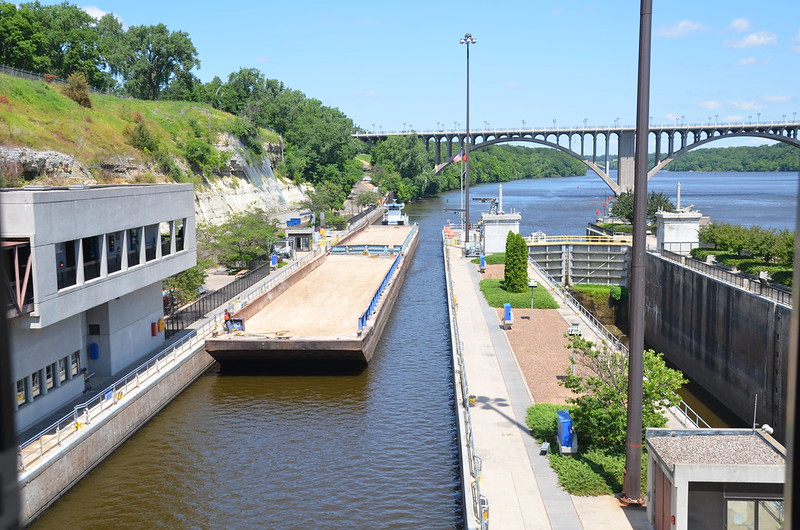
EcoEducation: Our Mighty but Imperiled Mississippi, and How We Can Save It.
There has been a lot of headway in the efforts to improve the health of the Mississippi River here in the state of its birth. The vision of Friends of the Mississippi River - to have a river where the water is clear and clean and safe to swim in, where fish and wildlife are healthy and abundant, and where scenic bluffs and cultural treasures are protected - however, is not fully realized. Executive Director, Whitney Clark, shared with the EcoClub the many ways that FMR advocates for the river and teaches us all how we can be better stewards.
One of the ways FMR is involved in saving the Mississippi to be enjoyed by all Minnesotans is through land use and development discussions. There are plenty of these discussions that are active such as clean up in "Ford Area C" at the old Ford plant in St. Paul, the consideration by the Army Corps of Engineers to remove the lock and dam systems in St Paul and Minneapolis, and the Upper Harbor Terminal Project. Whitney Clark also shared with us how FMR helped concerned Inver Grove Heights citizens change their city council's decision to sell River Heights Park. Although owned by the city, the park is a part of the Mississippi National River & Recreation Area, as well as the Mississippi River Flyway.
Another way FMR is involved in river health is to help our community understand the impact of things like phosphorous and nitrates that come from urban land use and cropland and sediment inflow that comes from field erosion due to shallow rooted crops and fallow land. Hardly the enemy of agriculture, FMR wants us to innovate and explore new ways of growing cash crops that support farmers and the river alike. One idea is the Forever Green initiative from the UofM to plant winter hardy perennial and annual crops among corn and soybeans. After the corn and beans are harvested, instead of a barren field, crops such as Camelina (an edible oil and biofuel) remain - keeping the soil intact with their roots and supporting soil health. The farmer has two cash crops on the same amount of land plus healthier soil. There is less chemical run off and sediments entering our waterways. A win win.
The activity most of us think of when we think FMR is the organization of passionate citizens who treasure our river and want to contribute through stewardship and advocacy. Throughout the year, FMR organizes approximately 60 public cleanups, hauls, pulls or plantings throughout the Twin Cities. FMR offers several stewardship programs that are a mixture of education and action. FMR also coordinates the stream health monitoring for Rice Creek watershed with citizen volunteers (similar to the Hennepin and Dakota Counties' Wetland Health Evaluation Program) and drain stenciling for St Paul. For those who wish to advocate for water quality and river health at the city, state, or national level, FMR offers the River Guardian program.

USACE Photo by Patrick Moes - Public Domain
thumbnail picture by @davebaur on Pixabay
